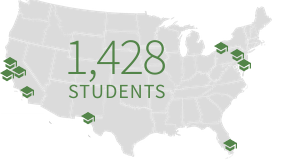Strengthening Students’ Career Success
Putting Evidence to Work in the Every Student Succeeds Act (ESSA)

MDRC evaluations offer evidence on a range of educational programs and interventions, including career and technical education, that empower schools, school districts, and states to make evidence-based decisions about the programs they choose to implement.
| Five Accountability Indicators |
|---|
| Proficiency on assessments |
| Growth in proficiency or another academic indicator |
| High school graduation rates |
| Progress of English learners toward proficiency |
| A flexible fifth indicator of school quality and student success |
ESSA requires school districts to implement a five-measure accountability system, including a flexible fifth indicator of school quality and student success.
Thirty-five states (and counting) have ESSA accountability systems that include measures of career readiness as their flexible indicator of school quality and student success.
Here is one example of how a school district might effectively strengthen students' career readiness.
The District Challenge
Position your students for college and career success.
Position your district to meet ESSA accountability standards in your state.
A Potential Solution
| Career Academies | |
|---|---|
|
Career Academies are career-themed small learning communities often situated in larger high schools. Entry into an academy is voluntary and accessible to every student. Career Academies support students in meeting career goals while also providing high-quality academic preparation. |
|
Example
A Medical Career Academy
Together, a small group of high school students take core subject matter classes and a medical course each year during tenth through twelfth grade. Teachers across these classes collaborate on lessons and projects.
Employment partner: A local hospital offers a variety of work-based learning experiences that grow over the years of high school.
Higher education partner: The local community college offers dual-enrollment medical-science courses for high school seniors.
MDRC Evaluation
MDRC conducted a rigorous random assignment evaluation of Career Academies.
 The study followed 1,428 students at nine schools. The study ran from early high school until eight years after students were expected to graduate (1993-2008).
The study followed 1,428 students at nine schools. The study ran from early high school until eight years after students were expected to graduate (1993-2008).
85 percent of the students identified as Hispanic or African-American.

Career Academies produced sustained earnings gains that averaged 11 percent per year or almost $17,000 over 8 years, in 2006 dollars.
Earnings gains were concentrated in young men — their gains averaged 17 percent per year or nearly $30,000 over eight years, in 2006 dollars.
Career Academy students graduated high school and acquired college credentials at similar levels as non-Academy students.
Will it work for your district?
| Effective implementation will require: |
|---|
|
What about funding?
The Strengthening Career and Technical Education for the 21st Century Act (Perkins V) is a federal law dedicated to investing in quality secondary and postsecondary career and technical education programs.
Districts can use Perkins V funds to implement Career Academies.






